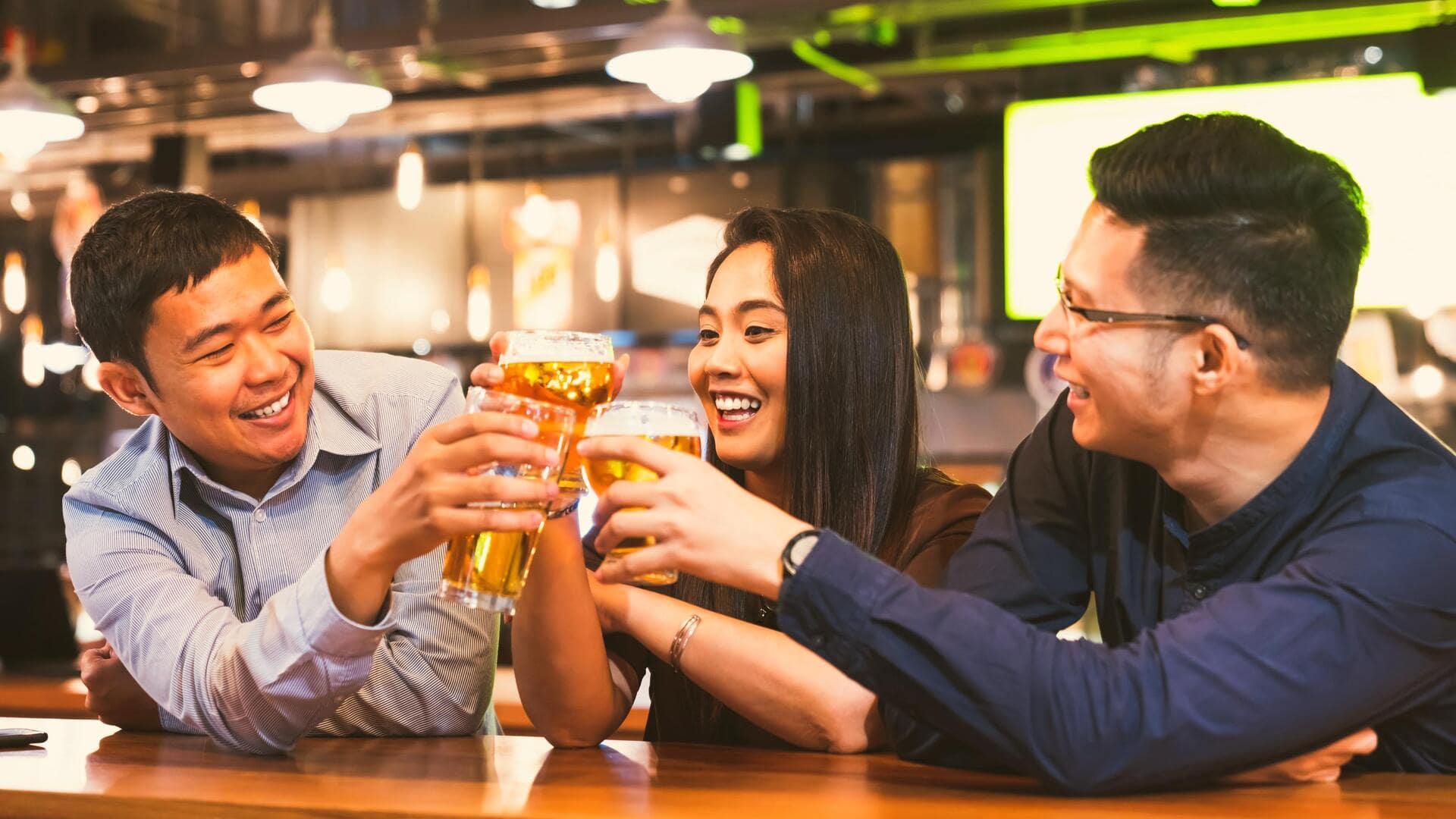
What's the truth behind the 'Asian Glow'?
What's the story
Ever turned red after a drink? If you are an Asian, especially from China, Japan, or Korea, you may have experienced it.
About 45 out of 100 East Asians get a "glow" when they drink liquor, hence the "Asian Glow."
Here's everything you need to know about this not-so-rare condition which is endemic to the natives of the East Asian nations.
Asian Glow
What causes Asian Glow?
Asian Glow occurs when alcohol turns your face and upper body red.
The reason behind this? Blame it on acetaldehyde, a toxin that is produced when the body metabolizes alcohol.
Normally, our body has an enzyme that tackles this issue, making everything under control.
But, many East Asians lack this enzyme. The toxins accumulate and end up causing the reaction known as Asian flush.
Genetic mutation
The cause of this condition is genetic
This reaction is the result of ALDH2*2 gene mutation in East Asian populations.
It is believed to have originated where rice cultivation and the Baiyue tribe were prominent thousands of years ago.
Ronald G. Crystal from Weill Cornell Medical College, told the Washington Post, "This is one of the most common hereditary disorders in the world, and people in our societies like to drink."
Symptoms
Other symptoms apart from red face
Apart from the red face, there are a bunch of other signs to look out for.
These include feeling breathless, rapid heart rate, pulsing headache, bloodshot eyes, a congested nose, and bouts of nausea - all triggered by alcohol.
These effects can be seriously uncomfortable, to the point where people dealing with this might just call it quits on drinking altogether.
Other causes
Other causes of Asian flush
Certain medications can also trigger red flushes, similar to Asian flush, but it doesn't necessarily mean that it's due to an allergic reaction.
Drugs like oxycodone, doxorubicin, and Viagra can lead to this redness in some patients.
Cushing's syndrome, eating spicy foods, and experiencing emotional triggers like anger or anxiety attacks can also cause the face to turn red.
Risks
Risks associated
The ALDH2*2 genetic mutation increases risks for cardiovascular diseases, osteoporosis, esophageal cancer, and more, Ronald G. Crystal explains to the Washington Post.
However, the ALDH2*2 variant doesn't influence esophageal cancer risk in people who don't drink.
This mutation is also linked to higher risks of head and neck cancers, gastric cancer, coronary artery disease, stroke, and osteoporosis in East Asian populations.
Prevention
Tips on coping with the reaction
Keep your liquor intake moderate - for men, two drinks max per day and for women, one drink.
Avoid binge drinking to prevent worsening the flush. Opt for drinks with lower alcohol content, like wines below 12.5% APV.
Eat before and while drinking to protect your stomach and slow alcohol absorption.
Stay hydrated with water or non-alcoholic drinks, given alcohol's dehydrating effect.